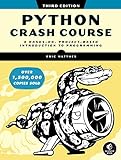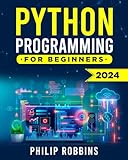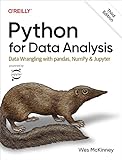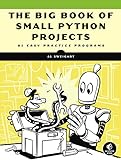To split a very long string column in pandas, you can use the str.split() method along with the expand=True parameter. This will split the string column into multiple columns based on a specified delimiter. You can also specify the n parameter to limit the number of splits.
For example, if you have a dataframe df with a column named long_string containing very long strings separated by commas, you can split the column into multiple columns by using the following code:
1
|
df[['col1', 'col2', 'col3']] = df['long_string'].str.split(',', expand=True)
|
This will create three new columns col1, col2, and col3, each containing the split parts of the original long string column. You can adjust the number of columns and the delimiter to suit your specific data format.
Overall, splitting a very long string column in pandas can be achieved easily using the str.split() method with the expand=True parameter.
How to split a very long string column in pandas and create a new column for each split element?
You can use the split method of a pandas Series to split a long string column and create a new column for each split element. Here's an example:
1 2 3 4 5 6 7 8 9 10 11 12 13 14 15 16 |
import pandas as pd # Create a sample DataFrame with a long string column data = {'long_string_column': ['apple,banana,orange', 'grape,kiwi,pineapple']} df = pd.DataFrame(data) # Split the long string column and create a new column for each split element df['split_elements'] = df['long_string_column'].str.split(',') # Explode the split elements into individual rows df = df.explode('split_elements', ignore_index=True) # Rename the columns for clarity df = df.rename(columns={'split_elements': 'new_column'}) print(df) |
This will split the long string column into individual elements using a comma as the delimiter, create a new column new_column for each split element, and explode those elements into individual rows.
How to split a very long string column in pandas and handle potential memory issues?
If you have a very long string column in a pandas DataFrame and you want to split it into multiple columns, you can do so by using the str.split() method on the column and specifying the separator. However, when dealing with a very large dataset, it is important to handle potential memory issues.
Here are some strategies you can use to split a very long string column in pandas and handle potential memory issues:
- Split the column into multiple smaller chunks: Instead of splitting the entire column at once, you can split the column into smaller chunks and process them one by one. This can help reduce memory usage by only loading and processing a smaller portion of the data at a time.
1 2 3 4 |
chunk_size = 10000 for chunk in pd.read_csv('data.csv', chunksize=chunk_size): chunk['split_column'] = chunk['long_string_column'].str.split(',') # Process the chunk here |
- Use the iterator parameter in the read_csv function: When reading in a large CSV file, you can set the iterator=True parameter in the read_csv function to create an iterator object that allows you to process the data in chunks.
1 2 3 4 |
data_iterator = pd.read_csv('data.csv', iterator=True) for chunk in data_iterator: chunk['split_column'] = chunk['long_string_column'].str.split(',') # Process the chunk here |
- Use the converters parameter: You can use the converters parameter in the read_csv function to specify a function that splits the long string column into multiple columns. This can help reduce memory usage by processing the data on the fly.
1 2 3 4 |
def split_column(row): return row['long_string_column'].split(',') data = pd.read_csv('data.csv', converters={'long_string_column': split_column}) |
By using these strategies, you can split a very long string column in pandas and handle potential memory issues efficiently.
How to split a very long string column in pandas without affecting the original dataset?
You can use the str.split() method in pandas to split a long string column into multiple columns without affecting the original dataset. Here is an example:
1 2 3 4 5 6 7 8 9 10 11 12 13 14 15 16 17 |
import pandas as pd # Create a sample dataset data = {'column_name': ['value1 value2 value3', 'value4 value5 value6']} df = pd.DataFrame(data) # Split the long string column into multiple columns df_split = df['column_name'].str.split(' ', expand=True) # Rename the new columns df_split.columns = ['col1', 'col2', 'col3'] # Concatenate the new columns with the original dataset df_new = pd.concat([df, df_split], axis=1) # Print the new dataset print(df_new) |
In this code snippet, we first split the 'column_name' column using the str.split() method with a space delimiter. We then create new columns with the split values and concatenate them with the original dataset to create a new dataset with the split columns. The original dataset df remains unchanged.
How to handle missing values when splitting a very long string column in pandas?
When splitting a very long string column in pandas and encountering missing values, you have a few options for how to handle them:
- Drop the rows with missing values: You can remove any rows with missing values before splitting the string by using the dropna() method:
1
|
df.dropna(subset=['column_name'], inplace=True)
|
- Fill the missing values: You can replace the missing values with a specific value before splitting the string by using the fillna() method:
1
|
df['column_name'] = df['column_name'].fillna('replacement_value')
|
- Ignore the missing values: You can simply ignore the missing values and continue splitting the string as is. Pandas will automatically exclude the missing values when splitting the string.
Choose the option that best suits your data and analysis needs.
How can I divide a very long string column in pandas into multiple columns?
You can divide a very long string column in pandas into multiple columns by using the str.split() method and assigning the result to new columns. Here is an example:
1 2 3 4 5 6 7 8 9 10 11 12 13 14 |
import pandas as pd # Create a sample dataframe with a long string column data = {'long_string': ['John,Doe,30,New York', 'Jane,Smith,25,Los Angeles']} df = pd.DataFrame(data) # Split the long_string column into multiple columns df[['First Name', 'Last Name', 'Age', 'City']] = df['long_string'].str.split(',', expand=True) # Drop the original long_string column df = df.drop('long_string', axis=1) print(df) |
This code will split the long_string column into 4 separate columns named First Name, Last Name, Age, and City.









